A Guide to the Seoul Lotus Lantern Festival: Everything To Know
Last Updated on March 5, 2025
The 2025 Seoul Lotus Lantern Festival (연등회) in celebration of Buddha’s birthday is back! This spring festival takes place over a few days with events around downtown Seoul from morning into the evening. Colorful lanterns have been strung up around the city in anticipation of the event and then over 100,000 more lanterns will be lit and paraded down the main streets of the capital.
The excitement, hope, and love is palpable at this event and all are welcome to attend whether Buddhist or not. This is one of the most beautiful events to see each spring in Korea.

Check out my nifty guide to the 2025 Seoul Lotus Lantern Festival below to understand the full extent of this event and check out the family friendly tips should you have a little one in tow.
- When is the Lotus Lantern Festival in Seoul?
- A Brief History
- Temples To Visit Before Buddha’s Birthday
- Lotus Lantern Festival Events
- Did you know you can be IN the parade?
(This post contains affiliate links, which means I receive a certain percentage of a sale if you purchase after clicking at no cost to you. Thank you for your support.)
When is the Lotus Lantern Festival in Seoul?
This year, 2025, the Lotus Lantern Festival in Seoul will take place from April 26 to April 27.
A Brief History
Buddhism was first introduced to Korea in 372, a time when the main religion was Shamanism. Seeing no conflict between Buddhism and the nature worshipping of Shamanism, a special kind of Buddhism emerged. The fundamental teachings of Buddha combined with the three highly regarded spirits of Shamanism to produce Korean Buddhism.

Still today, shrines worshipping the Shamanistic spirits Sanshin, the Mountain Spirit, Toksong, the Recluse, and Chilsong, the Spirit of the Seven Stars or the Big Dipper, can be seen in many Buddhist temples around the country.
Korean Buddhism was at its height during the Goryeo Dynasty, which reigned from 918 to 1392, but suffered a long repression during the Joseon Dynasty that would last some 500 years and it wouldn’t gain importance again until after WWII. Today, some 25% of the Korean population practices Buddhism.
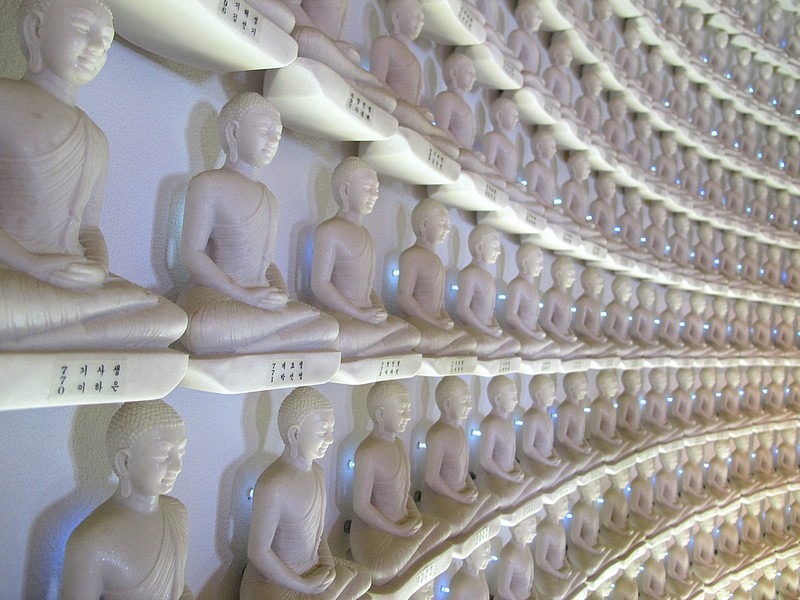
The lotus lantern goes back to the Three Kingdoms Period when it was recorded that royals admired the lotus lantern shape of the colorful lanterns they saw. King Kyeongmun and Queen Jinseong visited Hwangryongsa Temple just to admire the beautiful lotus lanterns there.
During the Goryeo Period when Buddhism became the state religion, the royals were patrons to lotus lantern events and by the Joseon Dynasty, the last dynasty in Korean history, the lotus lantern event was transformed into a New Year’s tradition that has survived until today.
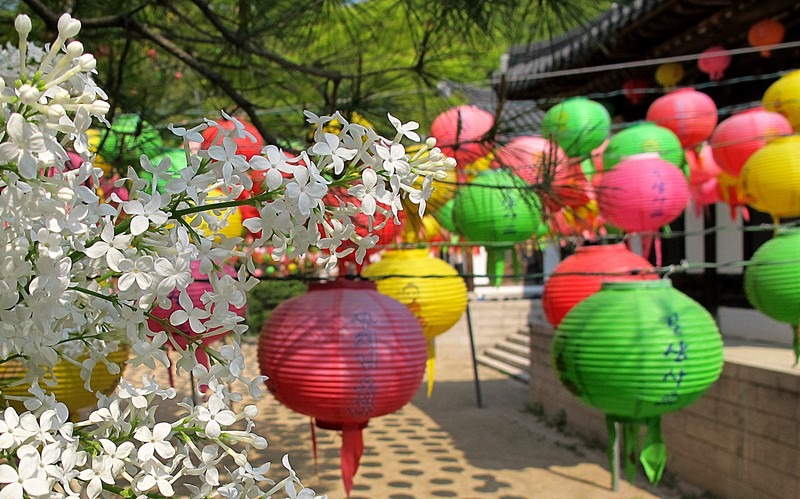
Actually, during the first half of the Joseon Dynasty, Buddhism was repressed in the country and many monks that were residing in city temples escaped to the mountains to seek refuge which is why today, you’ll still find many temples are mountainside.
During this dynasty, in 1431, there was a royal decree to prohibit the lotus lantern event but it continued as a folk custom and residents still hung the lanterns around their villages and outside of their homes with the number hung equal to the number of children they had.
Though the Joseon Dynasty tried to squash Buddhism in the country, the traditions of the lotus lantern festival in celebration of Buddha’s birth continued. While the event is in celebration of Buddha’s birthday, it is very much a cultural event here in Korea as it has changed throughout the years and various political circumstances.
Temples To Visit Before Buddha’s Birthday
About a month prior to the massive event, beautifully colorful lotus lanterns are strung up around temples throughout the country and even hang lining the streets. The lanterns along the street often bear the name of the nearest temple and if you follow them, you’re bound to find the temple where you can bask in the beauty. There are various lanterns to see; some are colorful and some are white, some are in the shape of lotus flowers and some are more octagonal.
If you want to find a temple in Seoul, Korea where you can see some beautiful lanterns while taking in a temple, here are some that I highly recommend.
Suguksa Temple (수국사)
This is the only golden temple in Seoul and it’s really absolutely stunning especially in the spring when the lotus lanterns are hung. Suguksa Temple is extremely unique so go if you’re beginning to feel like if you’ve seen one temple, you’ve seen them all. Located in Eunpyeong-gu, it’s off the beaten path and that’s all I’ll say about this temple.

Bongwonsa Temple (봉원사)
This is one of my favorite temples in Seoul and it is often overlooked by tourists so if you have a visit, at least know you’ll probably enjoy most of the scenery by yourself. Not far from Yonsei University and the artsy district of Hongdae, Bongwonsa Temple was originally built in 889AD by Master Doseon. The complex today has numerous buildings and chief among them is the 3000 Buddha’s Hall which is a three story tall structure built without even using one nail. It is the largest wooden building in Korea.
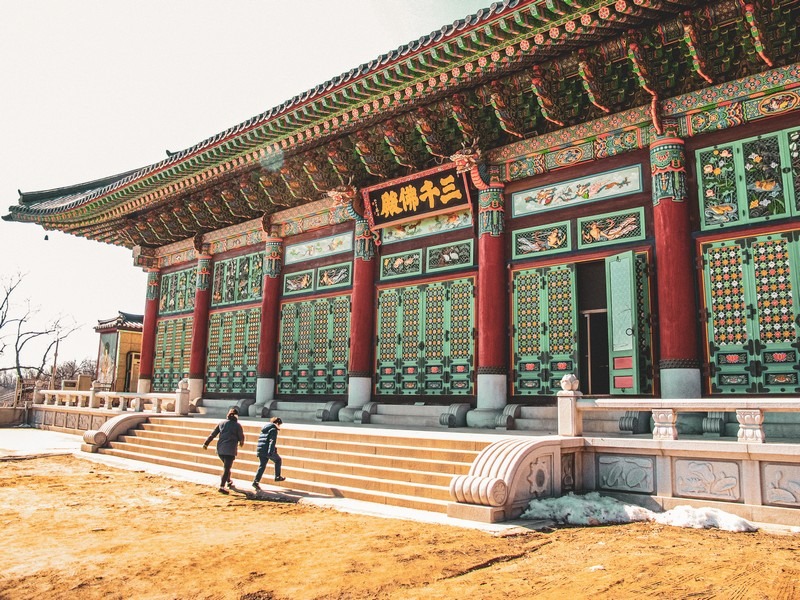
Gilsangsa Temple (길상사)
Located on the southern side of Mt. Samgaksan in northern Seoul, Gilsangsa Temple was only registered in 1995 but offers some great temple stay programs and a beautiful ceiling of colorful lanterns each spring. The buildings on the complex were originally part of a restaurant called Daewongak but they were donated to Monk Beopjeong Sunim after the owner was moved by an essay written by the monk. It’s a beautiful temple and the walk into the forest is quite calming too.
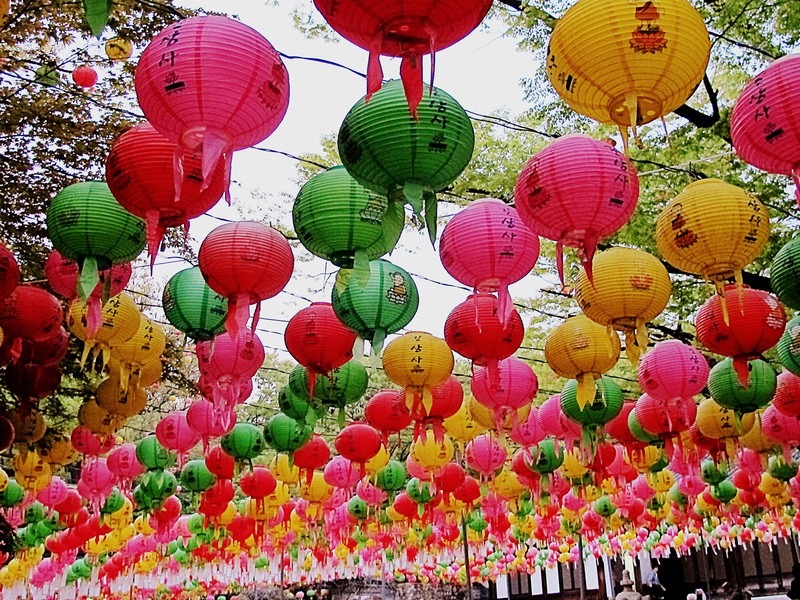
Bongeunsa Temple (봉은사)
Located on the eastern side of Seoul in the Gangnam-gu area, Bongeunsa Temple is easy to access just opposite COEX mall and is often added to itineraries for people staying in that area. The temple is always welcoming to visitors and in the spring is beautiful to behold with cherry blossom flowers and lotus lanterns strung up in celebration. Believed to have been built in 794CE during the reign of King Wonseong. Struggles surrounded this temple and the monks that resided there.
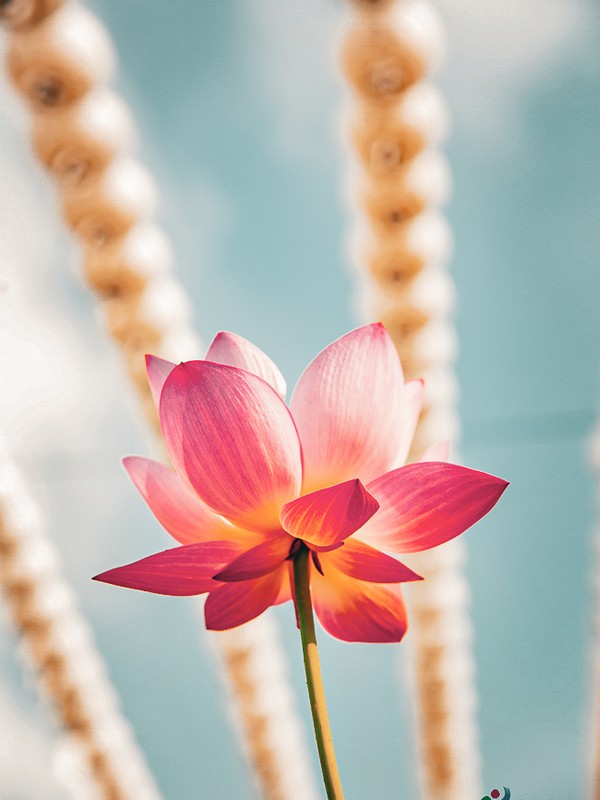
Jingwansa Temple (진관사)
One of the four major temples in Seoul, Jingwansa Temple is the only temple in Seoul to serve Suryukje, a Buddhist ceremony to provide food and the Buddhist teachings to spirits and starved demons that wander the land and sea. While you won’t be able to see the ceremony most likely as it is performed every leap year for 49 days, this is a beautiful temple to visit and you can visit the must see Hanok Village few people know about too!

Jogyesa Temple (조계사)
Jogyesa Temple is always one of the most talked about temples during this season and it’s where the Lotus Lantern Parade ends so it’s no wonder. The thing is, since the entire event is really located around this temple, I wouldn’t suggest going BEFORE the event. You’ll definitely end up seeing this temple before or after the parade or during culture day, so visit another one prior to enjoy the views, but of course don’t miss this one on the event weekend. This temple is the chief temple of the Jogye Order the largest order in the country, and is a great space to learn more about Korean Buddhism.
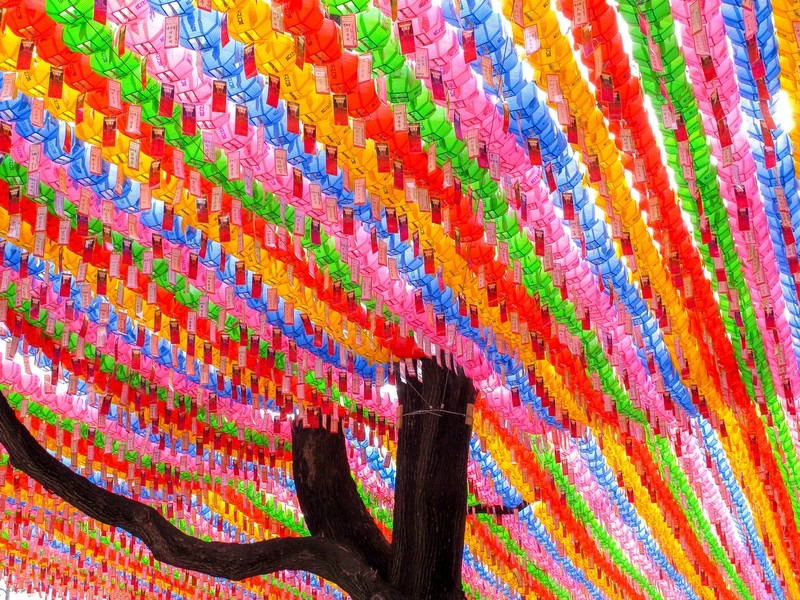
If you’re interested in Korean Buddhism and Buddhist temples around this beautiful country, check out this post with 22 MUST SEE Temples. There are some gorgeous ones that might require a little trip, but it will be well worth it.
Lotus Lantern Festival Events
Eoulim Madang (어울림마당)
April 26, 2025; 4:30pm ~ 6:00pm
As the first event of the festivities, the Eoulim Madang, or Dharma Ceremony and Cheer Rally, is all about getting people movin’ and groovin’ and ready for a good time… and a long walk. All of the participants in the parade gather together at Dongguk University Stadium in their Hanboks and other traditional garb, gather their lanterns and dance, sing and pray to get into the spirit of celebrating Buddha’s birthday.

There is a ceremony bathing the baby Buddha, a Dharma Ceremony, which includes a chorus, Temple Bell, Three Refuge, Heart Sutra, Opening Announcements, Prayers, a Chanting Sutra and finally ending with the Declaration of the Lantern Parade.
Spectators are welcome and may even pick up a free lantern, but if you want to get the best seats for the parade, you’ll want to make a mad dash from the stadium down to Jongno before the end of the stadium festivities. Seeing the Eoulim Madang is a fantastic way to really get into the spirit of the event with everyone though.
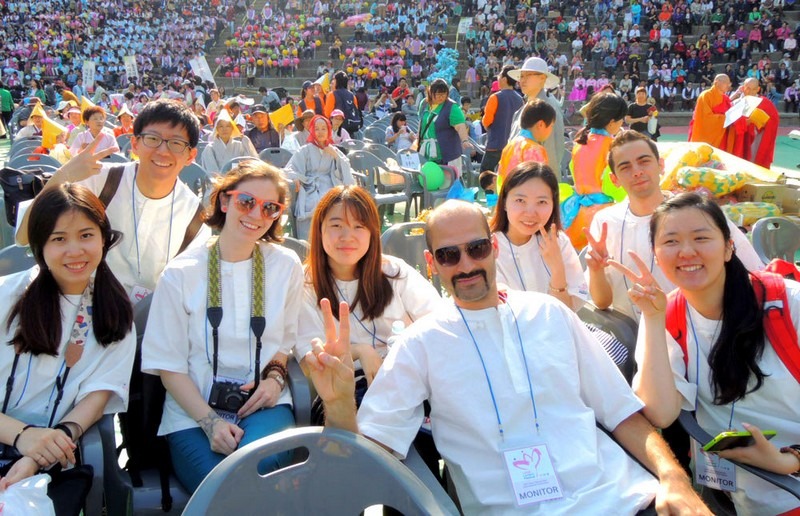
Family Friendly Tips: This is a great event to attend if you have small ones that are still going to bed early. You’ll be able to see all of the parade attendees in their beautiful traditional clothing, Hanboks, and if you look around, you might also be able to get one of the free lanterns to take home.
- Where: Dongguk University Stadium, (Dongguk University Station, Line 2, Exit 6)
- Address: 26 3-ga Pil-dong Jung-gu, Seoul, Korea (서울특별시 중구 필동3가 26)
Lantern Parade (연등회)
April 26, 2025; 7:00pm ~ 9:30pm
In the past, around 300,000 people have gathered together to witness the beauty that is the Lantern Parade. With over 100,000 lanterns to see in all shapes and sizes from the traditional lotus flowers to the long dragon and large elephants and fire breathing peacocks, there are some sights to enjoy, not to mention the beautiful and colorful Hanboks groups will be wearing.
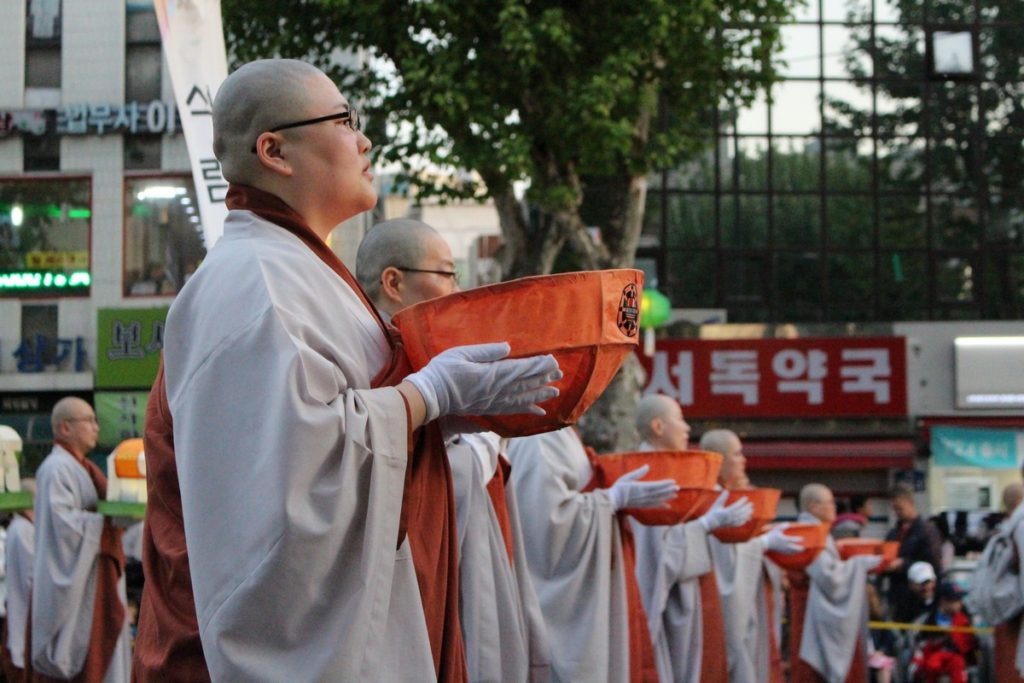
Though the parade starts in Dongdaemun, the most popular place to grab the free seats that will be placed along the route is closer to Jonggak Station.
People start filling up the seats 30-60 minutes in advance near the end of the route so grab some friends, get some drinks and get there early so you can grab the chairs as soon as the attendants begin to put them out. That said, sitting near the beginning near Dongdaemun/Jongno 1-ga means you’ll get to see all of the lanterns and Hanboks while there is still daylight and from kick-off time.

While the event begins at 7:00pm, the people sitting near Jonggak won’t be able to see anything until closer to at least 7:30/7:45 as it’s blocks down from the beginning. Really, there’s no bad seat along the route though.

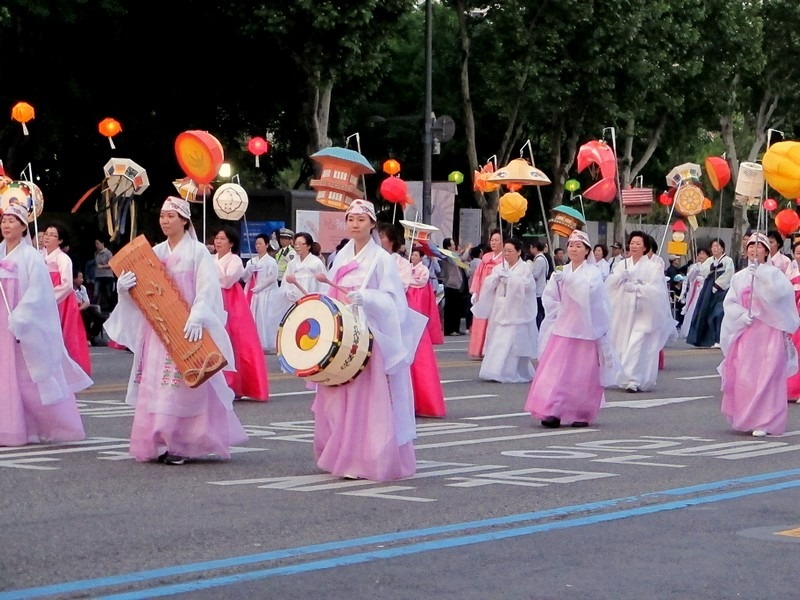
Family Friendly Tips: The parade route is five blocks long and seats closer to Jonggak fill up quickly. These seats are difficult to get and with children, you’ll have to take into account that you would just be sitting without anything to look at for at least an hour and a half or more.
With that in mind, I highly recommend getting seats closer to the start of the route between Dongdaemun and Jongno 5-ga. The seats here only start filling up about 30 minutes prior to the event and there’s usually more space to spread out.
Get to the area for an early dinner in Gwangjang Market which is just outside of Jongno 5-ga subway station, exit 4 or 5 and then grab a seat to make it a fun evening.
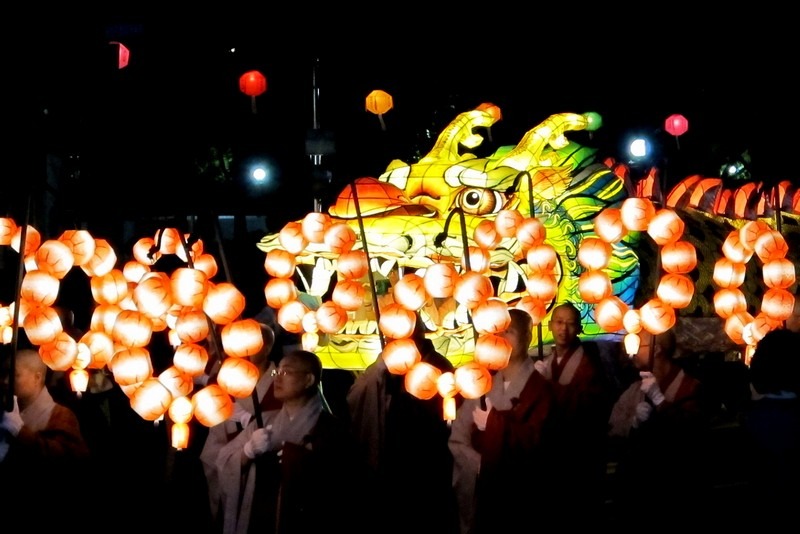
Pro Tips: The largest of the parade floats can’t start from Dongguk University and actually line the road in front of the Dongdaemun Design Plaza. If you’re just interested in seeing some big floats before the event starts, head there to see them as they’re parked waiting.
On the flipside, at the end of the parade route, the large floats are also parked on the street in front of Jogyesa Temple and by the point, it’s dark so you can take pictures with them as they’re parked and lit up. Head there if you want to see them when it’s dark and they’re still so it’s easier to take photos.
- Where: From Dongdaemun down to Jonggak
- Transport: Dongdaemun Station (Line 1, Exit 9 & 10), Jongno 5-ga Station (Line 1, Exit 1, 4, 5 & 8), Jongno 3-ga Station (Line 1, 3 and 5, every exit), Jonggak Station (Line 1, every exit).
Hoehyang Hanmadang (회향한마당)
April 26, 2025; 9:30pm ~ 11:00pm
After the parade, though some people head home, the participants in the parade will gather together to fill Jonggak Sageori (the intersection just outside of Jonggak Subway Station), and dance for another couple of hours. Dancers on stage will show you the steps so you can jump on in too.

People link hands to shoulders and massive snages zig-zag through the crowds. There’s laughing, dancing and singing until an explosion of confetti falls overhead. This is a merry event to experience and there is NO way you will want to be there without jumping in and shaking your groove thang. If massive street parties are your thing, don’t miss this part of the events.
- Where: Jonggak Intersection near Jonggak Station (Line 1, ALL Exits)
Traditional Culture Experience Day
April 27, 2025; 12:00pm ~ 6:00pm
Tents line the street in front of Jogyesa temple near the popular Insadong district and visitors can paint, glue and stamp a variety of Korean Buddhist crafts either for free or a very minimal cost that covers the material costs.

You can make lotus lanterns, Buddhist prayer bead bracelets, traditional dolls, paint bowls and plates and stamp prints of Buddhist images. You can visit tents with Buddhists from not only Korea but visiting Buddhists from other countries that will answer questions and showcase their own specific and unique cultural Buddhist rites. There will also be performances and ceremonies on the street as well.



Family Friendly Tips: If your kids like more hands on experiences, this is a great event to attend and you can easily stop into nearby Jogyesa Temple for the lantern views and then head over to Insadong to get a bite to eat. If you couldn’t attend the parade the night before but want to see one, come to the culture day a bit later so you can also stay to see the mini parade that will wrap up events in the evening.
- Where: In front of Jogyesa Temple, Jonggak Station (Line 1, Exit 2) and Anguk Station (Line 3, Exit 6)
Yeondeungnori (연등놀리)
April 27, 2025; 7:00pm ~ 9:00pm
To finish off the entire event, a mini parade heads around the block from Jogyesa temple, down Insa-dong’s main drag and back to the temple to culminate in a final celebration with dancing and music. It’s a beautiful and more intimate event than the night previous and a great way to end the entire weekend celebrating the birth of Buddha.
If you only want to spend one day downtown, go Sunday to partake in some crafts and the street party AND you can still witness a nice, though smaller, lotus lantern parade and concert.

Family Friendly Tips: If you just want to see a mini parade and couldn’t attend the night before, this is your second chance. Get a seat in one of the restaurants or cafes with window seating along Insadong street as the parade route will wind down that small road before wrapping back around to Jogyesa Temple.
If you want to see the performance at the very end, then stay on Jogyesa Street and look for the big mats that are set up for the final performance and grab a seat around the edge as soon as you can for an up close view.
- Where: In front of Jogyesa Temple, Jonggak Station (Line 1, Exit 2) and Anguk Station (Line 3, Exit 6)

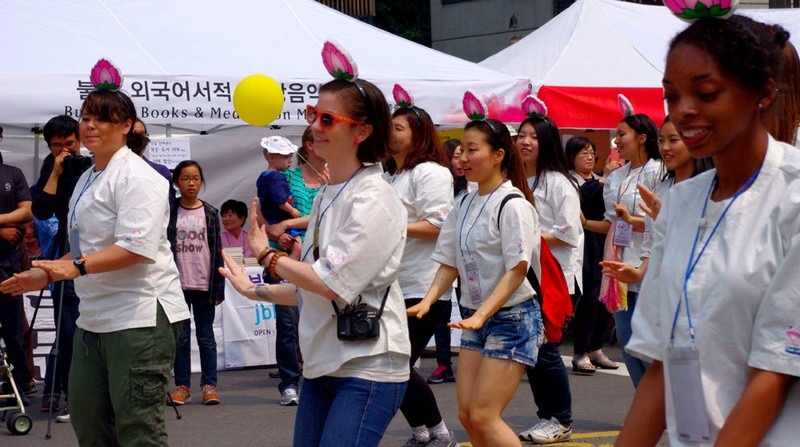
Did you know you can be IN the parade?
Every year, there is a group of foreign volunteers and supporters that get to take part in the festivities. If you want to participate this year, apply apply apply! It’s a great experience to learn about Korean Buddhism, make friends from around the world, and have fun this spring in Seoul.
Did you like this post? Pin It!
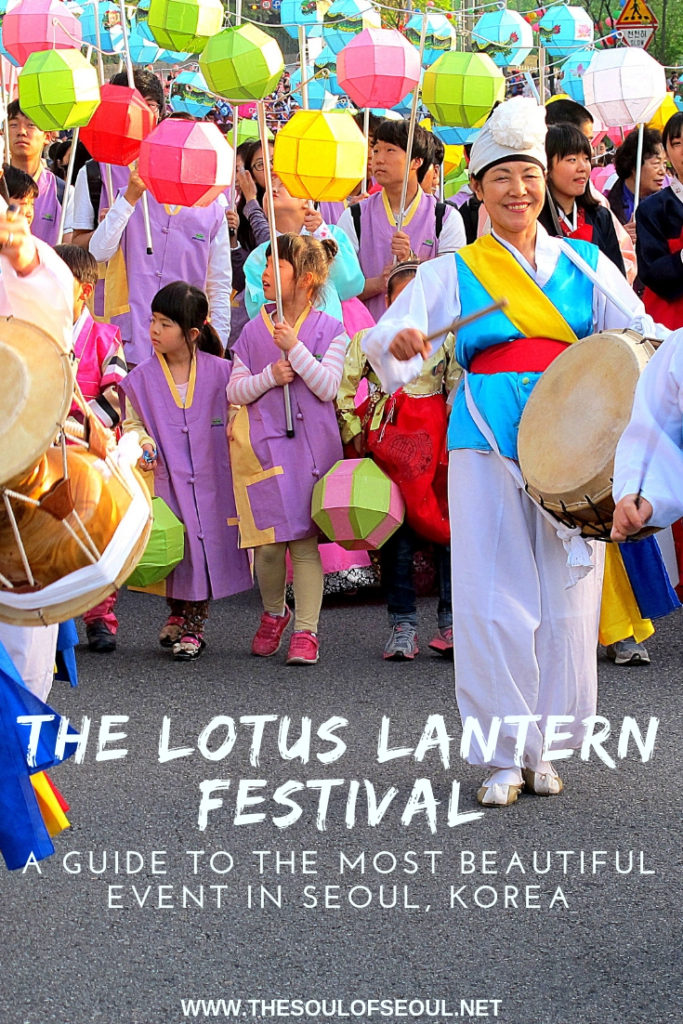
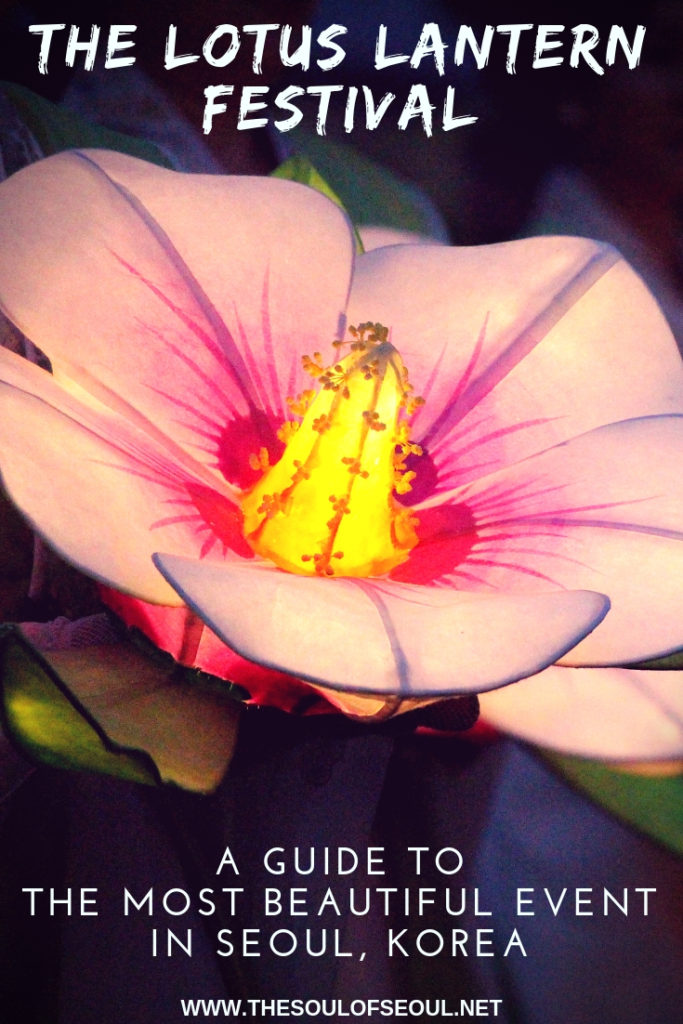

10 Comments
Maddy and Sascha
Thank you so much for this super helpful insights into the Lotus Latern Festival! We will be there in 2025 and can’t wait to experience it. Your article was super helpful! Just wanted to let you know how great it was for our travel planning.
Hallie Bradley
Thank you! This festival is one of my absolute favorites. We don’t miss it. I’m so glad you’ll get the chance to see it and enjoy too. ^^
Russ Kennedy
Hi, Hallie
Ive been reading through your superb blog as my son and myself are visiting Seoul (Myeongdong) and Busan (Haeundae beach) at the end of April 2025. The information you’ve provided has proved invaluable.
Would you have any idea of the dates for the Lotus Lantern Festival for next year?
Based on Budha’s birthday i thought it might be around the 3/4 May but I found a website that quoted the week before.
Any help and guidance much appreciated.
Regards
Russ
Hallie Bradley
Hi Russ, That’s right, the festival is usually a week before Buddha’s Birthday and on the weekend.
Alice
Thanks for this post! I would love to watch Lantern Parade (연등회) on May 11, however I’ve read online that you need to reserve your seat in advice, but I didn’t find this information in your post. Does that mean that reservation is no needed and if I come abot 2 hours before the event and grab a seat I will be still able to watch it without reservation?
Hallie Bradley
That’s right. There is a section for reservations, but you don’t have to do that. You can also just show up and sit anywhere not in that one section. They put chairs out all along the route and you can just sit in any of them. The reserved section is clearly marked so you’ll know not to sit in those chairs.
tj
Your blogs are hands down the best guides for planning a Seoul trip. 🙂
Hallie Bradley
I really appreciate that and hope you get to enjoy the Lotus Lantern Festival this year. It’s one of our favorite events of the year in Seoul.
Esther
Thank you so much for the extencive information! I am going to visit this years event on the 18th and 19th of May. I guess the activities are the same?
Really looking forward to visiting!
Hallie Bradley
Yes, it’s the same every year for the most part.